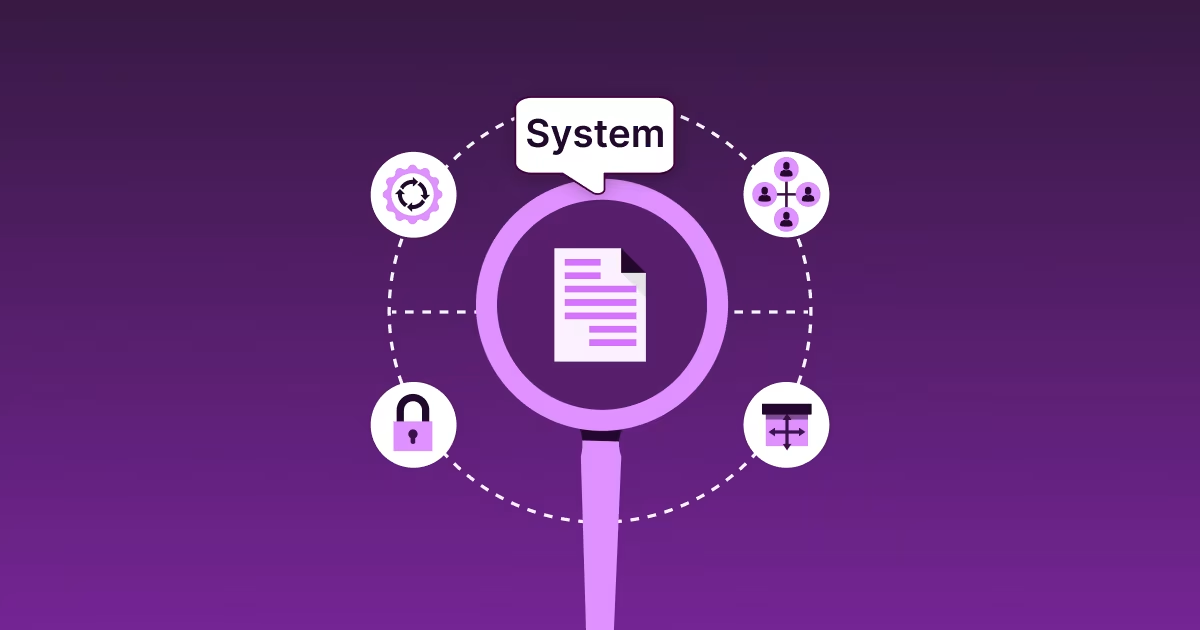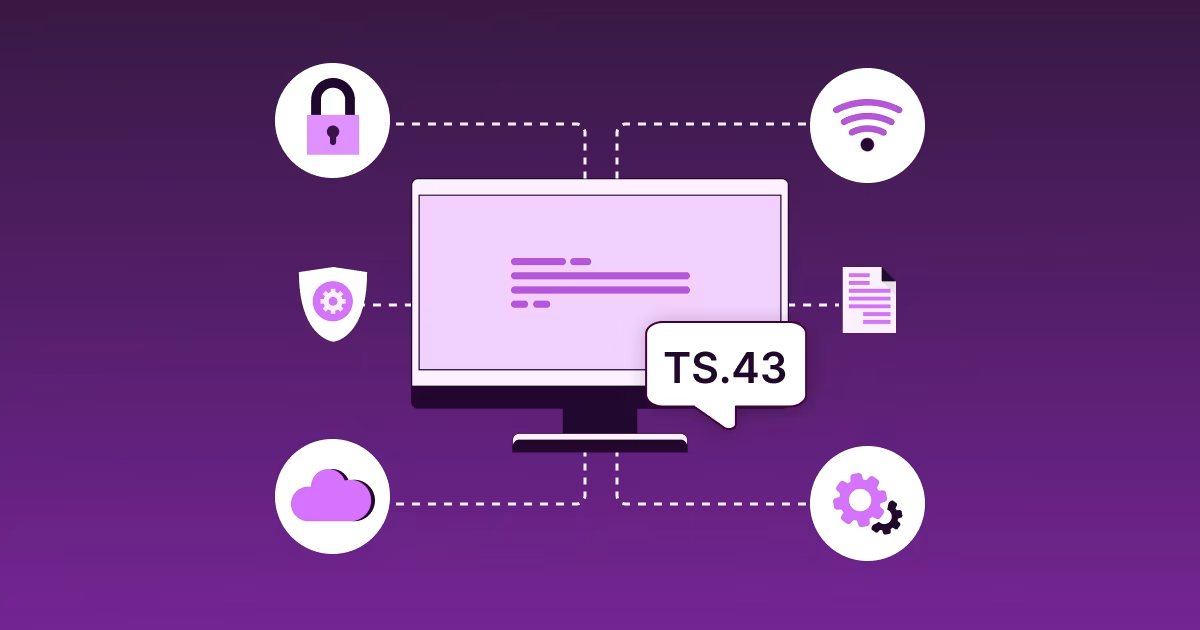Architecting a Scalable Entitlement System | GSMA TS.43 Best Practices

Key Takeways
- Entitlement is the backbone of modern service activation.
- Scalability is critical when supporting millions of devices.
- GSMA TS.43 provides the framework for secure, standardized entitlement flows.
- Caching, pre-validation, and monitoring are your best tools for performance.
- Treat entitlement as a business enabler, not just an engineering component.
Introduction: The Hidden Bottleneck in Device Activation
Here’s something surprising. Most large-scale activation failures in mobile devices trace back to one small but critical layer: the entitlement system.
If you work with connected devices, carriers, or OEMs, you already know how this feels. You get everything else right (network provisioning, firmware, cloud APIs) but users still face “activation failed” errors on day one.
The cause is often buried in your entitlement checks.
Entitlement servers sit quietly between devices and networks, verifying whether a user, SIM, or subscription is entitled to use a service. It sounds simple, but at scale, this is one of the most complex parts of the telecom ecosystem.
Building an entitlement system that is reliable, fast, and compliant with GSMA TS.43 standards is a real engineering challenge. And if you get it wrong, it can cost you millions in lost activations and poor user experience.
In this blog, we’ll go beyond the basics. You’ll learn how to design a scalable entitlement system, why TS.43 matters, and what best practices top OEMs and carriers follow to make it work smoothly.
Also read: Entitlement Server vs Authorization Server vs Provisioning Server: What’s the Difference?
1. What Entitlement Really Means in Modern Device Ecosystems
In simple terms, entitlement is about verifying whether a device, user, or subscription is allowed to access a service. But in modern ecosystems, it’s much more than a yes or no answer.
Think of entitlement as the control center of service activation. It ensures that when a user activates VoWiFi, eSIM, or a companion device, all the checks (from SIM to subscription to policy) happen in real time.
A good entitlement system ties together three worlds:
- The device (which triggers the request)
- The carrier network (which validates the entitlement)
- The OEM platform (which orchestrates the user experience)
Most people think entitlement only matters to mobile operators. In reality, it’s now equally important for OEMs and digital service providers. For example, wearables, IoT devices, and companion devices all depend on entitlement validation through GSMA TS.43 flows.
A lesser-known fact: entitlement servers are now becoming revenue enablers. Carriers and OEMs are monetizing entitlement traffic for premium services like eSIM companion activation and carrier billing. So, it’s not just a technical function anymore — it’s a business driver.
Read: Use Cases of Entitlement Servers
2. Why Scalability Matters
When you serve a handful of devices, entitlement checks are easy. When you serve millions, every millisecond matters.
Imagine millions of devices waking up after a software update or a new SIM insertion, all requesting entitlement validation at once. If your server isn’t built for concurrency, it will choke.
Scalability isn’t just about handling traffic. It’s about maintaining consistent response times even during peak bursts. For global OEMs, this means building entitlement servers that can scale horizontally and operate in multiple regions with minimal latency.
Latency directly impacts user experience. A delay of even five seconds during activation can cause drop-offs or customer frustration.
The solution lies in smart architecture choices, which we’ll explore next.
Read: Security in Entitlement Servers
3. Building Blocks of a Scalable Entitlement Architecture
Microservices Over Monoliths
A monolithic entitlement server may work in the early stages, but it becomes hard to manage as your services grow. Breaking it down into independent microservices makes scaling and fault isolation easier.
Your architecture should include:
- A request handler for receiving device queries
- A policy evaluation engine for entitlement decisions
- A data store for subscriber and device profiles
- Integration services for communicating with BSS/OSS systems
Microservices let you scale each component independently. For example, you can scale the policy engine during large activations without affecting the rest of the system.
Read: How to Implement an Entitlement Server (TS.43) for Mobile Operators
Distributed and Edge-Based Setup
Global device activations mean global traffic. If all entitlement requests route to a single region, latency will spike.
Deploy your entitlement services closer to users using edge nodes or POPs. This setup shortens the round trip time and reduces activation delays.
Some OEMs even cache entitlement decisions temporarily at regional edges, allowing faster responses for repeated or similar requests.
Fault-Tolerant and Always-On Design
Your entitlement system must never be a single point of failure. Use redundant clusters, active-active deployment, and global failover policies.
If one region goes down, another should automatically take over.
Include a “degraded mode” to serve cached entitlement results when backend services are unavailable. This ensures that device activations don’t fail completely, even during outages.
4. How GSMA TS.43 Fits In
GSMA TS.43 is the industry standard that defines how devices and entitlement servers communicate to verify service access.
It’s most commonly used in:
- VoWiFi and VoLTE activation
- eSIM companion device setups
- Direct carrier billing and app entitlement
Here’s how it works:
- The device sends an entitlement request to the entitlement server.
- The server authenticates the device using EAP-AKA or token-based methods.
- The server checks the subscriber’s eligibility with the carrier systems.
- It returns the entitlement configuration or status to the device.
TS.43 ensures that devices from different OEMs can talk to carriers in a consistent, secure way.
A practical tip: always implement logging and correlation IDs in your TS.43 flows. This helps track failed requests and identify network-level issues quickly.
Read: TS.43 Entitlement Server Deployment Guide
5. Designing for Real-World Scale
Pre-Validation and Lightweight Checks
Before running the full entitlement flow, perform quick pre-validation.
For example, check if the SIM is active or if the subscription type supports the requested service.
This helps filter invalid requests early and reduces load on your main entitlement logic.
Caching Smartly
Caching is your best friend, if done carefully.
Cache entitlement decisions for a short time window (for example, a few minutes) for users with stable subscriptions.
Avoid long caching durations to prevent stale data. The balance between speed and accuracy is key.
Analytics and Observability
Monitor every part of your entitlement flow.
Set up dashboards for metrics like:
- Average entitlement latency
- Percentage of failed checks
- Revalidation rate per region
Use these insights to improve system performance and predict peak load events, such as firmware rollouts or new device launches.
Read: Deployment Models for Service Entitlement Servers
6. Common Challenges and How to Fix Them
Carrier and Regional Variations
Each telecom operator has unique network configurations and security requirements.
To manage this, design your entitlement system with a flexible policy layer. It should allow carrier-specific configurations without code changes.
Device Firmware Differences
Different OEMs or firmware versions handle entitlement APIs differently.
Maintain backward compatibility and versioned APIs to support older devices.
Data Privacy and Compliance
Entitlement systems handle sensitive user data like IMSI, MSISDN, and eSIM information.
Always encrypt data in transit and at rest. Follow privacy standards such as GDPR and regional telecom rules.
A good practice is to anonymize subscriber data when storing analytics logs.
7. Best Practices from Real Implementations
Here are lessons learned from teams who’ve built and scaled entitlement systems at global scale:
1. Decouple entitlement logic from network systems: Avoid tightly coupling entitlement servers with OSS/BSS. Use async messaging or APIs for communication. This prevents network maintenance from affecting entitlement performance.
2. Load test with realistic device traffic patterns: Simulate bursts of concurrent device activations, not just steady traffic.
Use the same payloads and authentication flows your devices actually send.
3. Monitor entitlement health continuously: Create alerts for unusual latency spikes or high failure ratios. Real-time observability helps prevent large-scale outages.
4. Design for extensibility: Services evolve. Tomorrow, you might need to add new entitlement use cases like IoT device access or app subscriptions. Build modular components that you can extend easily.
5. Automate configuration management: Use CI/CD pipelines to manage entitlement policies and configurations. Automation ensures that every change is tested and traceable.
8. The Future of Entitlement Systems
As devices become more intelligent, entitlement will move closer to the edge.
Edge-based entitlement validation will allow faster service activation even when connectivity to the central server is limited.
AI will also start to play a role. Predictive analytics can detect unusual activation behavior or potential fraud in real time.
Another emerging area is self-service entitlement management, where users can view and manage their active entitlements from device settings or OEM portals.
Entitlement systems will also integrate deeper with identity management and billing. The line between user identity and entitlement validation is getting thinner every year.
9. The Business Case for Investing in Entitlement
A well-architected entitlement system saves money, improves activation rates, and enhances user experience.
For OEMs, it ensures devices work out of the box without activation delays.
For carriers, it enables faster onboarding and easier monetization of premium services.
In many cases, improving entitlement response time by even two seconds can reduce activation drop-offs by up to 30 percent. That is a real business impact.
Think of entitlement as both a technical and strategic investment. It’s the bridge that connects users, devices, and networks securely and efficiently.
Read: From EAP-AKA to Access Token: How Device Authentication Works in a TS.43
Conclusion
Architecting a scalable entitlement system is not just about compliance or checklists. It’s about creating a foundation that supports millions of devices without breaking under load.
The best entitlement systems are invisible to users; everything just works.
If you design it right, users never notice it. If you don’t, it becomes the first thing they complain about.
Learn from the lessons shared here. Start small, design for scale, and keep observing real-world data. That’s how the best OEMs and carriers build entitlement systems that last for years.
Get in touch with our experts to discuss all about TS.43 entitlement servers.
FAQs
Q) How can I make my entitlement server scalable?
A) You can make your entitlement server scalable by using microservice-based architecture, edge distribution, caching, and pre-validation strategies. Monitoring latency and failover behavior is also critical for large-scale operations.
Q) What are common challenges in implementing entitlement servers?
A) Typical challenges include carrier variations, firmware differences across devices, privacy compliance, and managing entitlement checks during large activation spikes. Careful design and observability can help prevent these issues.
Q) How fast should an entitlement check ideally be?
A) An efficient entitlement system should complete its validation in under 2 seconds. Delays beyond 5 seconds can affect user experience during device activation or service enablement.





.png)


